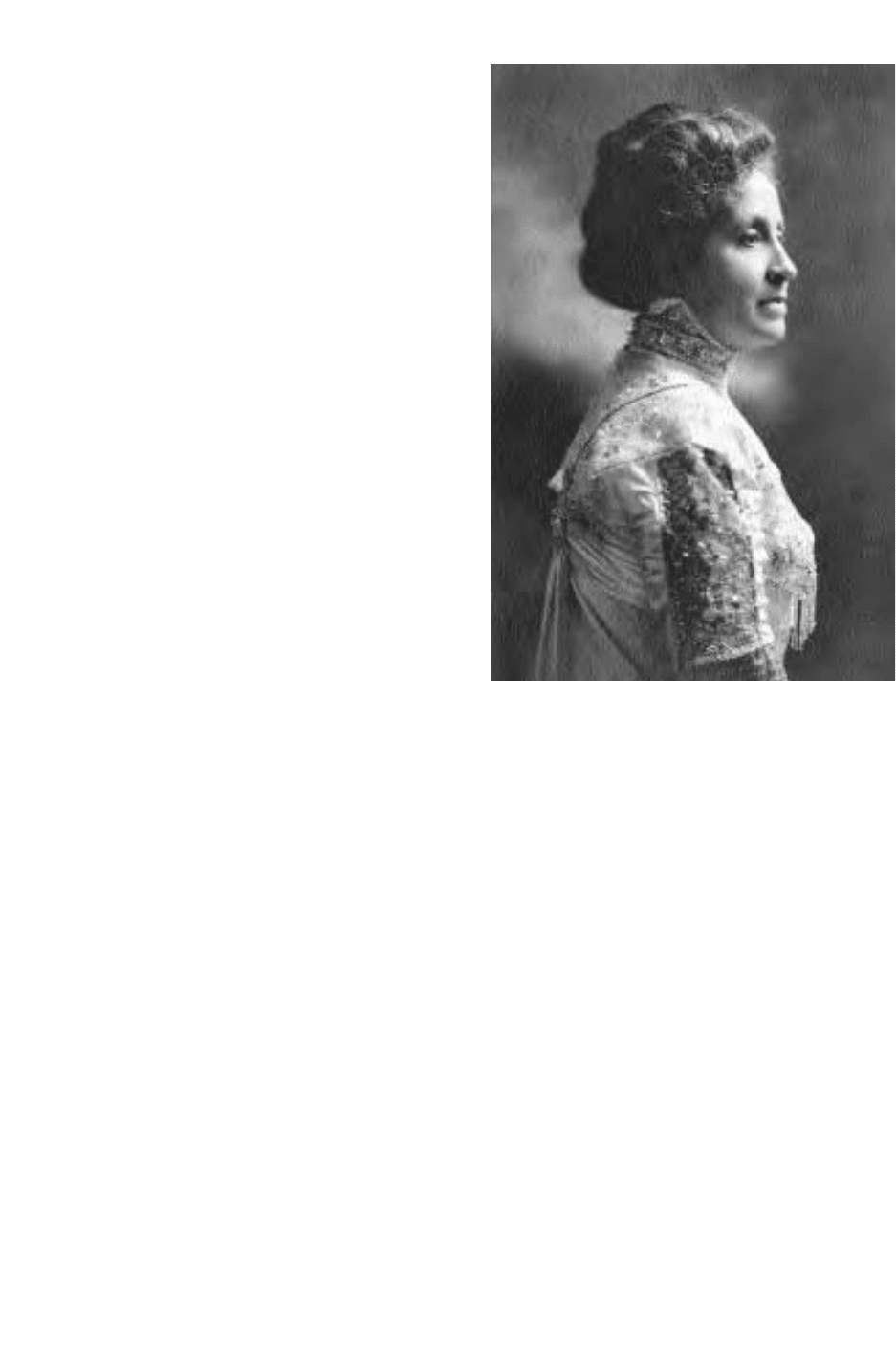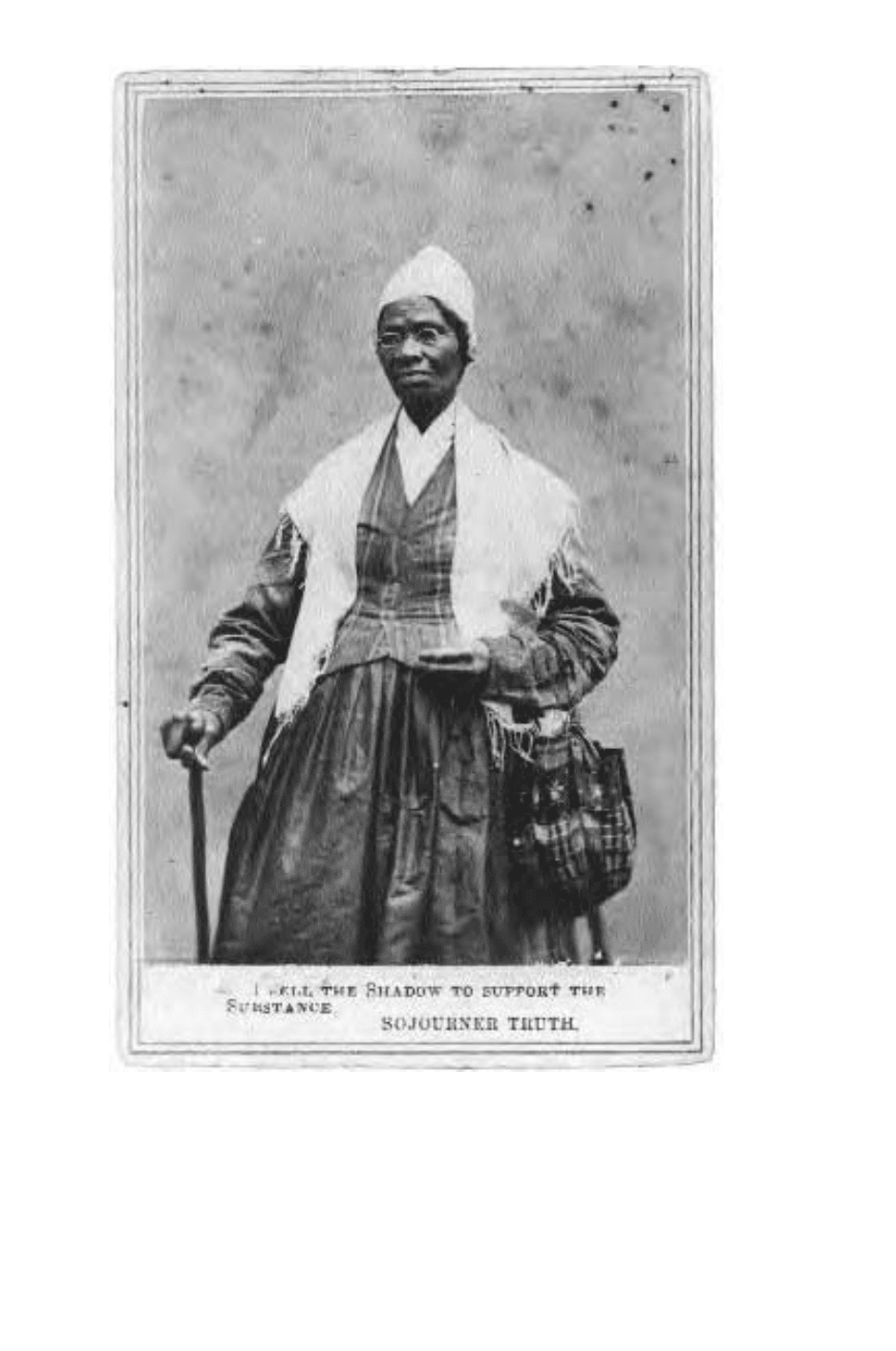Schenken Suzanne O’Dea. From Suffrage to the Senate: An Encyclopedia of American Women in Politics (2 Volumes)
Подождите немного. Документ загружается.


v. Florida (1961) that gender discrimination in jury selection did not vio-
late constitutional rights and that women had responsibilities in the home
that held precedence over jury duty. In Taylor, the Court pointed to
women’s labor force participation as evidence that women’s lives and re-
sponsibilities were not limited to the home.
At that time in Louisiana, a woman could not be selected for jury
duty unless she had filed a written declaration of her desire to be a juror.
In this case, Billy Taylor had been indicted for kidnapping, but because
there were no women on the jury, he claimed that he would be deprived
of “a fair trial by a jury of a representative segment of the community.”
Although Louisiana’s system did not disqualify women, the Court
wrote: “Louisiana’s special exemption for women operates to exclude
them from petit juries, which in our view is contrary to the commands of
the Sixth and Fourteenth Amendments.” The decision ended the gender
discrimination in jury selection that women had fought since the Seneca
Falls Convention in 1848 and more consistently attempted to end since
the passage of the Nineteenth Amendment granting women suffrage
rights in 1920.
See also Fourteenth Amendment; Hoyt v. Florida; Juries, Women on;
Nineteenth Amendment; Seneca Falls Convention
References Ginsburg, “Gender in the Supreme Court: The 1973 and 1974
Terms” (1976); Taylor v. Louisiana, 419 U.S. 522 (1975).
Temperance Movement, Women in the
Women’s involvement in the temperance movement began in the 1840s,
a time when married women’s legal dependence upon their husbands
made them financially vulnerable. An alcoholic husband could consume
not only his income and financial resources but his wife’s as well, leaving
her and her children destitute. Several temperance organizers also became
women’s rights advocates after concluding that without political power
they had little hope of accomplishing their goals. The temperance move-
ment prompted the founding of the first newspaper edited and published
by a woman in the United States, The Lily: A Ladies Journal Devoted to
Temperance and Literature. Founded in 1849 by Amelia Bloomer in
Seneca Falls, New York, The Lily added women’s rights to the issues it ad-
vocated. Other early temperance leaders who became women’s rights
leaders include Lucretia Mott, Lucy Stone, Susan B. Anthony, and Eliza-
beth Cady Stanton.
In the 1870s, the temperance movement entered a new phase with
the formation of the Woman’s Christian Temperance Union (WCTU).
Under the leadership of Frances Willard, WCTU president from 1879 to
1898, the WCTU expanded its agenda to include advocacy for woman
Temperance Movement, Women in the 659

suffrage. Women in the WCTU and other organizations significantly con-
tributed to the passage in 1917 and the ratification in 1919 of the Eigh-
teenth Amendment prohibiting alcohol in the United States.
In 1929, Pauline Sabin of New York called together two dozen
women and formed the Women’s Organization for National Prohibition
Reform (WONPR), dedicated to the repeal of the Eighteenth Amend-
ment. WONPR advocated temperance and argued that Prohibition had
increased alcohol use, crime, and political corruption in addition to con-
tributing to the general disregard for the law. By the 1932 elections, the or-
ganization had more than 1 million members, who through grassroots
networks and state and national organizations pressured political candi-
dates to support repeal of the Eighteenth Amendment. WONPR endorsed
candidates, generally Democrats, and campaigned for them. After Con-
gress passed the Twenty-first Amendment repealing the Eighteenth
Amendment, WONPR members helped organize state ratification con-
ventions. The process was completed in less than a year.
See also Anthony, Susan Brownell; Bloomer, Amelia Jenks; Coverture; Mott,
Lucretia Coffin; Stanton, Elizabeth Cady; Stone, Lucy
References Flexner and Fitzpatrick, Century of Struggle: The Woman’s Rights
Movement in the United States, enlarged edition (1996); Kyvig, “Women against
Prohibition” (1976).
Terrell, Mary Eliza Church (1863–1954)
Lecturer, political activist, and educator Mary Church Terrell committed
herself to improving the lives of African American women. She served as
the first president of the National Association of Colored Women
(NACW) and led the new organization’s development of its programs. In
1909, she helped found the National Association for the Advancement of
Colored People. In the 1940s, she provided leadership in a successful ef-
fort to desegregate restaurants in Washington, D.C.
Born in Memphis, Tennessee, Mary Church Terrell was born the same
year that President Abraham Lincoln signed the Emancipation Proclama-
tion, freeing African Americans from slavery, including Terrell’s parents.
Wanting a good education for their daughter, her parents sent her from
Memphis, Tennessee, with its segregated schools, to an elementary school
associated with Antioch College in Ohio. She attended Oberlin Academy
during her high school years and earned her bachelor of arts degree in
1884 and her master of arts degree in 1888, both from Oberlin College.
She also taught from 1885 to 1888. Traveling in Europe with her father in
the late 1880s, Terrell studied languages, learning French and German.
She married Robert H. Terrell in 1891 and became a homemaker be-
cause married women could not teach in public schools, although she did
660 Terrell, Mary Eliza Church

teach in the Colored Women’s League’s
night school. In 1895, Terrell received an
appointment to the District of Columbia
Board of Education, making her one of the
first African American women on a U.S.
school board. She later served again on the
board from 1906 to 1911.
Terrell began her long association
with women’s clubs in 1891, joining the
Colored Women’s League of Washington,
D.C. (CWL), which sought to improve
black women’s lives. In 1896, the CWL and
the National Federation of Afro-American
Women, an association of local black
women’s clubs, merged into the National
Association of Colored Women (NACW)
and elected Terrell president. NACW was
the first national network of communica-
tion among black women, providing them
with information about events across the
country.
African American women had begun
forming women’s clubs at about the same time as white women, but
African American women had to form their own associations because of
the racial prejudice of white women who did not permit them to partici-
pate in their clubs. The extent of the prejudice is apparent from an event
in 1900. When the General Federation of Women’s Clubs held its conven-
tion, Terrell was denied the opportunity to offer them greetings on behalf
of NACW because of the objections of southern white women.
As president of NACW, Terrell established the organization’s
monthly newsletter, National Notes, organized biennial conventions with
art and literature exhibits, and trained women in leadership. She encour-
aged local clubs to create kindergartens and day nurseries, and she raised
the money to hire a kindergarten adviser to motivate and help clubs open
them. More than a dozen facilities had opened by 1901. She also led the
formation of Mother’s Clubs, which taught housekeeping and child-rear-
ing skills. Several clubs also opened homes for girls. Terrell stepped down
in 1901 because the NACW constitution prohibited anyone from serving
more than two consecutive terms.
By the mid-1890s, Terrell had become a professional lecturer, speak-
ing at Chautauquas, forums, and universities across the nation. In the
course of her travels she encountered the South’s segregation laws and the
Terrell, Mary Eliza Church 661
Mary Church Terrell,
first president of the
National Association
of Colored Women,
fought against
segregation and
lynching, ca. 1890
(Library of Congress)

inhumanity of them. Those experiences led to her commitment to inter-
racial understanding and her conviction about the importance of com-
munication between the races. She wrote articles about the accomplish-
ments of African Americans, criticized the white press for its stereotypical
articles about blacks, and attempted to educate whites about blacks and
their lives. She decried lynching and exposed the lies behind the myth that
black men were lynched in retaliation for raping white women, and she
described the inhumanity of the convict lease system.
During World War I, Terrell helped support the war effort by work-
ing at the War Risk Insurance Bureau but was dismissed because of her
race. She then went to work at the Census Bureau, but the humiliation of
the federal government’s segregation policies led her to resign the position.
Terrell was also active in other political movements. She had met suf-
frage leader Susan B. Anthony in 1898, and the two women had become
friends. Even though she was aware of the racism within the suffrage move-
ment, she lectured on the topic and worked for passage of the woman suf-
frage amendment. After ratification of the Nineteenth Amendment, she
worked for the National Republican Committee as the director of black
women in the eastern division. From 1929 to 1930, Terrell organized black
women for Ruth Hanna McCormick’s campaign for the U.S. Senate.
After World War II, Terrell changed the emphasis of her work from
racial understanding to a more militant approach. In 1946, she applied to
the District of Columbia chapter of the American Association of Univer-
sity Women (AAUW), was rejected on the basis of race, and appealed to
the organization’s national board, which decided in Terrell’s favor. In
1948, AAUW approved a new national bylaw that prohibited discrimina-
tion on the basis of race, religion, or politics. Terrell and two other African
American women joined the District of Columbia chapter in 1949.
She began another desegregation campaign in 1949. The district had
passed laws in the 1870s requiring service in public accommodations re-
gardless of color, but when the district’s legal code was written in the
1890s, the laws were disregarded and segregation became the norm. Re-
search showed that the laws had not been repealed, and Terrell formed a
committee to enforce the district’s antidiscrimination laws. As chair of
the Coordinating Committee for the Enforcement of District of Colum-
bia Anti-Discrimination Laws in 1949, she recruited the support of labor,
religious, women’s, and civic organizations. In 1950, an interracial party
of four requested service at Thompson’s Restaurant, but the three black
people in the group were not permitted to purchase food. They filed a
complaint that the municipal court dismissed. The next year, Terrell led a
sit-in at Kresge’s lunch counter, and after six weeks, the management
changed its policy and began serving African Americans. The same year,
662 Terrell, Mary Eliza Church

Terrell led a boycott and a picket line at Hecht Company, a department
store that had segregated lunch counters. After four months, the manage-
ment capitulated. Terrell was ninety years old when she led these and
other demonstrations in the District of Columbia. In 1953, the U.S.
Supreme Court decided in District of Columbia v. John Thompson, the
owner of the first restaurant that had refused Terrell and her party ser-
vice, that the laws from the 1870s were in force, and the district began to
be desegregated.
Ter rel l wrote The Progress of Colored Women: An Address Delivered
before the National American Woman Suffrage Association (1898), Harriet
Beecher Stowe: An Appreciation (1911), Colored Women and World Peace
(1932), and A Colored Woman in a White World (1940).
See also American Association of University Women; Anthony, Susan Brownell;
Civil Rights Movement, Women in the; National Association of Colored
Women; Suffrage
References Jones, Quest for Equality: The Life and Writings of Mary Eliza Church
Terrell, 1863–1954 (1990).
Thomas, Lera Millard (1900–1993)
Democrat Lera Thomas of Texas served in the U.S. House of Representa-
tives from 26 March 1966 to 3 January 1967. When her husband died in
office, Lera Thomas won the special election to fill the vacancy. During
her brief tenure in Congress, Thomas sought appropriations for a labora-
tory in Houston and for the Houston Ship Channel, both projects that her
husband had advocated. She did not run for another term.
Born in Nacogdoches, Texas, Lera Thomas attended Brenau College
and the University of Alabama. In 1968, Thomas was special liaison for
the Houston Chronicle to members of the armed forces in Vietnam.
See also Congress, Women in
References Office of the Historian, U.S. House of Representatives, Women in
Congress, 1917–1990 (1991).
Thompson, Ruth (1887–1970)
Republican Ruth Thompson of Michigan served in the U.S. House of Rep-
resentatives from 3 January 1951 to 3 January 1957. Congresswoman
Thompson worked for public library services in rural areas, programs to
stimulate the growth of low-cost electric power from a variety of sources,
and the establishment of a Department of Peace. Her other interests in-
cluded flood control and drainage projects. Thompson was defeated in
the 1956 primary election.
Born in Whitehall, Michigan, Ruth Thompson graduated from
Thompson, Ruth 663

Muskegon Business College in 1905. From 1918 to 1924, she worked in a
law office and studied law at night.
Elected probate judge in Muskegon County, she served from 1925 to
1937. After serving in the Michigan House of Representatives from 1939
to 1941, she worked in the civilian personnel section of the adjutant gen-
eral’s office from 1942 to 1945 and served in the adjutant general’s bureau
at Headquarters Command in Frankfurt, Germany, and Copenhagen,
Denmark, in 1945 and 1946. She returned to private law practice in 1946.
See also Congress, Women in; State Legislatures, Women in
References Office of the Historian, U.S. House of Representatives, Women in
Congress, 1917–1990 (1991).
Thornburgh v. American College of
Obstetrics and Gynecology (1986)
In Thornburgh v. American College of Obstetrics and Gynecology, the U.S.
Supreme Court rejected four provisions of the Pennsylvania Abortion
Control Act of 1982 on the basis that they subordinated a woman’s privacy
interests and concerns in an effort to dissuade her from having an abor-
tion. The invalidated provisions called for a physician to tell a woman
seeking an abortion that the father had a financial responsibility for the
support of a child and that medical assistance could be available if she
chose to continue the pregnancy. The physician was also required to in-
form the woman of any physical, medical, or psychological risks involved
in the abortion. Another rejected provision required the physician to re-
port the identity of the physicians involved in the procedure and infor-
mation that would permit the ready identification of the woman who had
the abortion. The last provision required, in postviability abortions, that
two physicians be in attendance; in addition, the physicians had to use the
abortion technique most likely to preserve the life of the fetus, even if it
placed the woman at risk, and there was no exception for emergency abor-
tions, which also placed the woman’s life at risk.
The Court overturned part of Thornburgh when it decided Planned
Parenthood of Southeastern Pennsylvania v. Casey (1992) and permitted
states to require informed consent.
See also Abortion; Akron v. Akron Center for Reproductive Health; Bellotti v.
Baird; Bray v. Alexandria Clinic; Colautti v. Franklin; Doe v. Bolton; Harris v.
McRae; Hodgson v. Minnesota; Ohio v. Akron Center; Planned Parenthood
Association of Kansas City, Mo. v. Ashcroft; Planned Parenthood of Central
Missouri v. Danforth; Planned Parenthood of Southeastern Pennsylvania v.
Casey; Poelker v. Doe
References Thornburgh v. American College of Obstetrics and Gynecology, 476
U.S. 747 (1986).
664 Thornburgh v. American College of Obstetrics and Gynecology

Thurman, Karen L. (b. 1951)
Democrat Karen Thurman of Florida entered the U.S. House of Repre-
sentatives on 3 January 1993. Congresswoman Thurman has worked to
apply the concepts of risk assessment and cost benefit analysis to govern-
ment decisions and to lift the burden of unfunded federal mandates from
state and local governments. She has advocated changes in the Medicaid
funding formula to better reflect a state’s needs and has sought to reim-
burse Florida for the costs associated with its immigrant population.
Thurman supports reproductive rights and reduction of the budget
deficit by cutting outmoded military projects and increasing taxes on for-
eign corporations. She opposed the North American Free Trade Agree-
ment (NAFTA) because the citrus and peanut crops grown in her area
compete with Mexican products, and thus NAFTA created an economic
threat to farmers in her district.
Thurman served on the Dunnellson City Council from 1975 to 1983
and was mayor from 1979 to 1981. She served in the Florida Senate from
1983 to 1993, where she worked on environmental issues. She called for
greater use of solar energy and worked to clean up leaky underground pe-
troleum tanks, and she sought to protect Florida’s drinking water and pre-
serve wetlands. She also worked on consumer protection and education.
Born in Rapid City, South Dakota, Thurman earned her associate’s
degree from Santa Fe Community College in 1971 and her bachelor of
arts degree from the University of Florida in 1973.
See also Congress, Women in; Reproductive Rights; State Legislatures, Women
in
References Congressional Quarterly, Politics in America 1994 (1993);
www.house.gov/thurman/about.htm.
Triangle Shirtwaist Company Fire
On 25 March 1911, the muffled sound from an explosion in New York
City’s Asch Building was the first indication of the fire in which 145
women employees of the Triangle Shirtwaist Company died. After the ex-
plosion, smoke billowed from windows on the eighth floor, and flames
soon followed. People on the street watched in horror as the only fire es-
cape collapsed with women climbing down it. The fire moved so quickly
that some women died at their sewing machines, and other women died
trying to escape through an exit door that was locked. Still other women
died from jumping out of the building.
The building owners and the owners of the Triangle Shirtwaist Com-
pany had been alerted to the many fire hazards that existed at their prop-
erty. Flammable materials were scattered on the floor, doors opened in-
ward, the stairwells were narrow and drafty, and the building had no
Triangle Shirtwaist Company Fire 665

sprinklers. The company owners were tried for manslaughter and were
found not guilty.
One of those who witnessed the fire was Frances Perkins, who served
as a chief investigator for the Factory Investigation Commission that was
formed after the fire. The commission’s recommendations included pass-
ing a fifty-four-hour workweek and a new industrial code, both of which
New York enacted.
See also Perkins, Frances (Fanny) Corlie
References Wertheimer, We Were There: The Story of Working Women in
America (1977).
Truth, Sojourner (ca. 1797–1883)
African American Sojourner Truth made herself a force in nineteenth-
century reform movements, denouncing slavery and slavers and advocat-
ing freedom, women’s rights, woman suffrage, and temperance. An illiter-
ate itinerant preacher, she helped propel the reform movements on which
she centered her life.
Sojourner Truth’s names reveal much about her. Born a slave in Hur-
ley, New York, and given the name Isabella, she took the name of the Van
Wagener family who bought her freedom when she was an adult, as well
as her youngest child’s freedom. The last shackles of slavery ended when
New York abolished it on 4 July 1827. Religious experiences beginning in
1827 endowed her with the power of the Holy Spirit and transformed her
into a powerful and moving preacher. In 1843, on the day of Pentecost, she
changed her name to Sojourner Truth, which means “itinerant preacher.”
While living at a religious commune in Massachusetts, Sojourner
Truth met Frederick Douglass, William Lloyd Garrison, and other reform
leaders and became part of a network of antislavery activists. She made
her first antislavery speech in 1844 and appeared at her first large women’s
rights meeting in 1850. She helped support herself by selling copies of her
autobiography, Narrative of Sojourner Truth: A Northern Slave Emanci-
pated from Bodily Servitude by the State of New York, in 1828.
Sojourner Truth’s speech at the 1851 Ohio Women’s Rights Conven-
tion, commonly known as her “Ain’t I a Woman” speech, contributed to
her growing national celebrity and her stature as a symbol of strength and
leadership. Some circumstances on the day of the speech and her words
may have been enhanced by the desire to make her an even more dramatic
figure than she was in reality. The traditionally accepted version of the
speech and its circumstances was written twelve years after the event. It
places her in a hostile crowd, has her speaking in dialect, and includes the
refrain “and ain’t I a woman?” But she may not have used the phrase. An
article published in the Salem Anti-Slavery Bugle on 21 June 1851 offered
666 Truth, Sojourner

a different account, which was written by the convention secretary and is
the one that Sojourner Truth’s most recent biographer regards as the more
accurate. Although she may have spoken in dialect, the story does not re-
flect that. In addition, the audience was not hostile, and the article does
not include any references to “and ain’t I a woman?” In part, the Anti-Slav-
ery Bugle report reads:
Truth, Sojourner 667
Sojourner Truth,
preacher and aboli-
tionist, participated
in many suffragist
conventions and be-
came famous for her
“Ain’t I a Woman”
speech, ca. 1850s
(Library of Congress)

I have as much muscle as any man, and can so as much works
as any man. I have plowed and reaped and husked and chopped
and mowed, and can any man do more than that? I have heard
much about the sexes being equal; I can carry as much as any
man, and can eat as much too, if I can get it. I am as strong as
man that is now. As for intellect, all I can say, is a woman have
a pint and man a quart—why cant she have her little pint full?
You need not be afraid to give us our rights for fear we will take
too much,—for we cant take more than our pint’ll hold. The
poor men seem to be all in confusion, and don’t know what to
do. Why children, if you have woman’s rights give it to her and
you will feel better.
The reporter concluded with “The power and wit of this remarkable
woman convulsed the audience with laughter.”
After the Civil War, a rancorous debate developed over the wording
of the Fourteenth Amendment to the U.S. Constitution. It included the
word male, which white feminists wanted removed. The debate continued
when the Fifteenth Amendment guaranteeing suffrage to former slaves
was introduced and did not extend the right to women. Most male and
black abolitionists, saying it was the “Negro’s hour,” did not want to im-
peril black men’s suffrage by adding references to woman suffrage. Truth
joined white feminists, arguing that if black men could vote, but black
women could not, “colored men will be masters over the women, and it
will be just as bad as it was before.” When the women’s rights movement
split into two camps, the American Woman Suffrage Association (AWSA)
and the National Woman Suffrage Association, however, Truth aligned
herself with the more conservative AWSA, which supported the Four-
teenth and Fifteenth Amendments.
Until her death, Sojourner Truth remained active in public affairs,
primarily serving as an advocate for new arrivals in Washington, D.C.,
who had been slaves. She worked with the Freedmen’s Bureau and with
private relief agencies. She also developed a plan to help freed people
move to Kansas but was unable to convince Congress to support it. In
1879, however, the state became the destination for many African Ameri-
cans from the Deep South.
See also Abolitionist Movement, Women in the; Fifteenth Amendment; Four-
teenth Amendment
References Painter, Sojourner Truth: A Life, a Symbol (1996).
Tubman, Harriet (ca. 1820–1913)
Harriet Tubman escaped slavery and made at least nineteen trips from the
North into the southern slave states to conduct more than 300 slaves into
668 Tubman, Harriet
